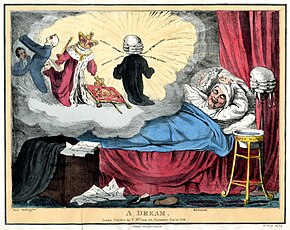Dream
**Dream Definition and History**:
– Dream is a succession of images, ideas, emotions, and sensations during sleep.
– Humans spend about two hours dreaming per night.
– Dream interpretation dates back to ancient civilizations like the Babylonians and Sumerians.
– The purpose and origin of dreaming are still unknown.
– Ancient writings highlight visitation dreams and their influence on behavior.
**Neurophysiology of Dreaming**:
– Dream study aims to explore the mind-brain problem.
– Current science struggles to detail dream physiology.
– Non-invasive measures like EEG and fMRI are limited in explaining dream neurophysiology.
– Animal studies provide clues but cannot confirm animal dreaming.
– Human brain lesion studies have limitations in understanding dream generation.
**Dream Generation and Function**:
– Dream research heavily relies on imaging due to lack of precision tools.
– Studies suggest dreaming involves multiple brain regions and pathways.
– Visual imagery in dreams is theorized to be generated by structures activated during sleep.
– Different dream events likely engage different brain regions and pathways.
– The cortex combines haphazard input with ongoing activity to synthesize a coherent story.
**Cultural and Historical Variations in Dreaming**:
– Dream experiences have shifted over history.
– Antiquity emphasized authoritative auditory messaging in dreams.
– Visualized narratives in dreams became prominent post-antiquity.
– Emotions in dreams vary, with anxiety being the most common.
– Sexual content in dreams is present but not predominant, more common in younger age groups.
**Brain Activity in Dreaming**:
– During REM sleep, certain brain regions are only partially activated.
– The left-brain interpreter seeks to construct a plausible narrative from signals reaching the left hemisphere.
– Sleep research has shown differences in brain activity between waking and REM sleep.
– Dream content can be bizarre due to the brain’s storytelling efforts.
– James W. Kalat suggests that dreams are the brain’s way of interpreting limited information.
A dream is a succession of images, ideas, emotions, and sensations that usually occur involuntarily in the mind during certain stages of sleep. Humans spend about two hours dreaming per night, and each dream lasts around 5 to 20 minutes, although the dreamer may perceive the dream as being much longer than this.

The content and function of dreams have been topics of scientific, philosophical and religious interest throughout recorded history. Dream interpretation, practiced by the Babylonians in the third millennium BCE and even earlier by the ancient Sumerians, figures prominently in religious texts in several traditions, and has played a lead role in psychotherapy. The scientific study of dreams is called oneirology. Most modern dream study focuses on the neurophysiology of dreams and on proposing and testing hypotheses regarding dream function. It is not known where in the brain dreams originate, if there is a single origin for dreams or if multiple regions of the brain are involved, or what the purpose of dreaming is for the body or mind.
The human dream experience and what to make of it has undergone sizable shifts over the course of history. Long ago, according to writings from Mesopotamia and Ancient Egypt, dreams dictated post-dream behaviors to an extent that was sharply reduced in later millennia.[clarification needed] These ancient writings about dreams highlight visitation dreams, where a dream figure, usually a deity or a prominent forebear, commands the dreamer to take specific actions, and which may predict future events. Framing the dream experience varies across cultures as well as through time.
Dreaming and sleep are intertwined. Dreams occur mainly in the rapid-eye movement (REM) stage of sleep—when brain activity is high and resembles that of being awake. Because REM sleep is detectable in many species, and because research suggests that all mammals experience REM, linking dreams to REM sleep has led to conjectures that animals dream. However, humans dream during non-REM sleep, also, and not all REM awakenings elicit dream reports. To be studied, a dream must first be reduced to a verbal report, which is an account of the subject's memory of the dream, not the subject's dream experience itself. So, dreaming by non-humans is currently unprovable, as is dreaming by human fetuses and pre-verbal infants.
